If you are a runner, then you know that having the perfect pair of running shoes is essential to your success. Not only do they need to be comfortable, but they also need to provide the right level of support and cushioning. In this comprehensive buyer’s guide, we will discuss all of the different factors you need to consider when purchasing new running shoes. We will cover everything from sizing and materials to shock absorption and padding. So whether you are just starting out or you are looking for an upgrade, read on for the information you need to make the perfect purchase!
How Can I Choose The Right Running Shoes?
I predict it, neutral runners are going to fall in love with this buyer’s guide and every other runner who looking for new shoes are going to find the right running shoe.
However, in this buyer’s guide, we are going to discuss the following nine main factors, buying a pair of neutral running shoes:
- Proper Sizing
- Materials
- Breathability
- Overlays
- Outer Soles
- Shock Absorption
- Insoles
- Midsoles
- Padding
1) Proper Sizing
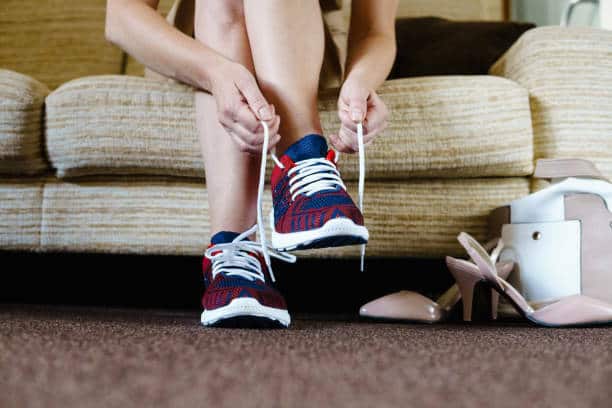
When it comes to running shoes, proper sizing is absolutely essential. Ill-fitting shoes can cause a whole host of problems, from blisters and black toenails to shin splints and knee pain. And while you might be able to get away with wearing shoes that are a little too big or a little too small for everyday walking, running is a whole different story. Every extra millimeter of space in your shoes can make a big difference, so it’s important to make sure you’re getting the right size.
There are a few different ways to figure out your proper shoe size. The most accurate way is to go to a specialty running store and have them measure your feet. This ensures that you’re getting the right size for both your length and width. You can also measure your feet at home with a ruler or tape measure, though it’s always best to err on the side of caution and go up a size if you’re not sure.
Once you’ve figured out your size, the next step is to try on the shoes. Make sure you try them on with the socks you’ll be wearing when you run, and take the time to walk around the store a bit to see how they feel. Pay attention to any hot spots or areas that rub, as these can be potential problems down the road. And if you’re still not sure, don’t be afraid to ask the salesperson for their opinion. They’ve probably seen hundreds of people try on running shoes and can help you find the perfect pair.
2) Materials

When it comes to running shoes, the materials used can make a big difference in both comfort and performance. The upper part of the shoe, which is the part that covers your foot, can be made from a variety of different materials. The most common material used for shoe uppers is mesh. Mesh is a lightweight and breathable material that allows your foot to stay cool and dry during a run. Other materials used for running shoe uppers include synthetic leather, fabric, and even barefoot shoes that have no upper at all.
The material of the sole of the shoe is also important. The sole is the part of the shoe that comes into contact with the ground. Most running shoes have a rubber outsole, which provides good traction and durability. Some shoes also have an additional layer of foam or plastic between the outsole and the rest of the shoe, which provides extra cushioning. The material of the sole can also affect the weight and flexibility of the shoe.
When it comes to materials, it is important to choose a shoe that is comfortable and breathable, with a sole that is durable and provides good traction. Mesh uppers are a good choice for those who want a lightweight and breathable shoe. Synthetic leather and fabric uppers can also be comfortable and breathable, but may be slightly heavier. Barefoot-style shoes are a good choice for those who want a lightweight and flexible shoe, but they may not provide as much cushioning as a shoe with a foam or plastic sole.
3) Breathability
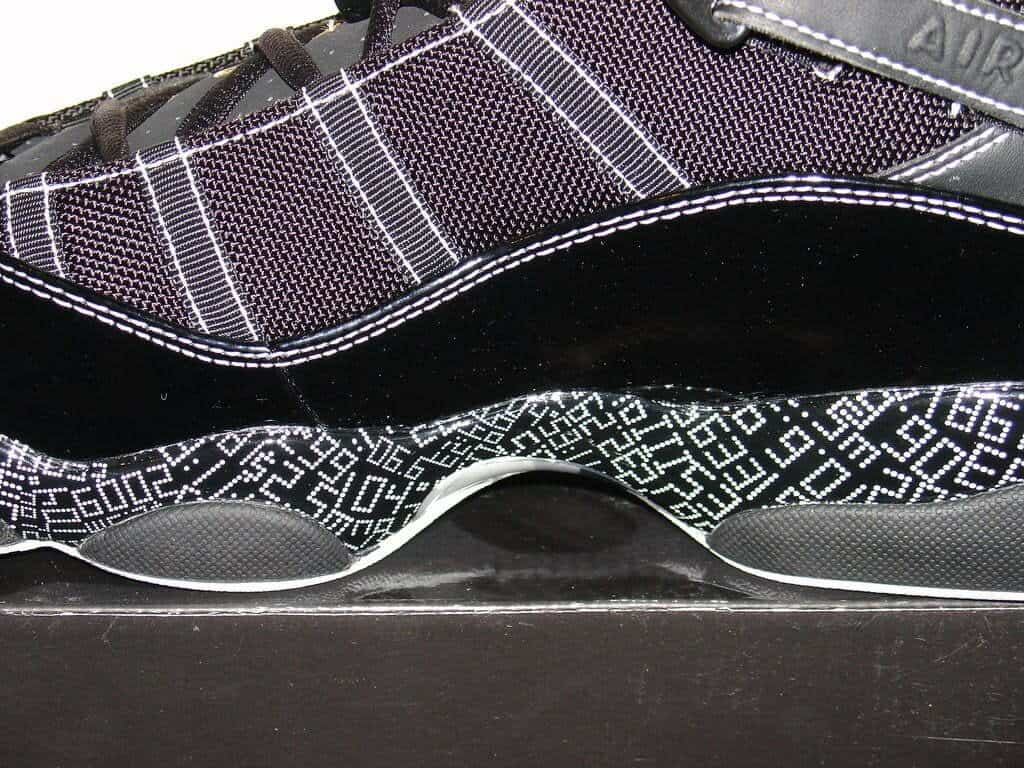
It’s important to choose a shoe with good breathability for a number of reasons. First, it will keep your feet cooler and more comfortable during your run. Second, it will help prevent blisters and other foot problems that can be caused by excessive sweating. Third, it will help your shoes last longer by preventing them from becoming soaked with sweat and then drying out and cracking.
There are a number of different factors that contribute to a shoe’s breathability, including the material of the upper, the design of the toe box, and the ventilation holes or mesh panels. If you live in a warm climate or you tend to sweat a lot, it’s especially important to choose a shoe with good breathability.
When you’re trying on shoes, pay close attention to how well they ventilate. If you can see your socks through the mesh panels, that’s a good sign. Another way to test breathability is to put the shoes on and walk around in them for a few minutes. If your feet start to feel hot and sweaty, that’s a sign that the shoes aren’t very breathable.
4) Overlays
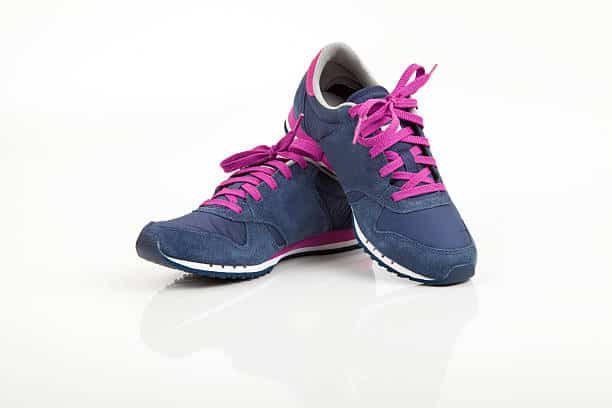
Overlays are an important part of a shoe’s construction because they provide support and structure to the upper. They also help to keep the foot in place, which is important for both comfort and performance. There are a variety of different overlay materials, each with its own advantages and disadvantages.
Nylon and polyester are two of the most common overlay materials. They are both lightweight and breathable, which makes them ideal for use in running shoes. Nylon is also very strong and durable, while polyester is more flexible and comfortable.
Leather and suede are two other common overlay materials. Leather is very strong and durable, but it is also heavy and not very breathable. Suede is lighter and more breathable than leather, but it is not as durable.
Mesh is another popular overlay material. It is lightweight and very breathable, but it is not as strong or durable as nylon or polyester.
When choosing a running shoe, it is important to consider the type of overlay material that is best suited for your needs. If you are looking for a lightweight and breathable shoe, mesh or nylon is a good option. If you need a more durable and supportive shoe, leather or suede is a better choice.
5) Outer Soles for Motion Control Running Shoes

The outer soles of your motion control shoes are important for several reasons. First, they provide traction and better grip, which is important whether you’re running on pavement, running with trail running shoes, or even in the gym. Second, they protect your feet from rocks, debris, and other potential hazards. And finally, they play a role in shock absorption, helping to protect your feet and ankles from the impact of each step. There are many different materials used for outer soles, including rubber, carbon rubber, and EVA foam. Each has its own advantages and disadvantages, so it’s important to choose the right material for your needs.
6) Shock Absorption
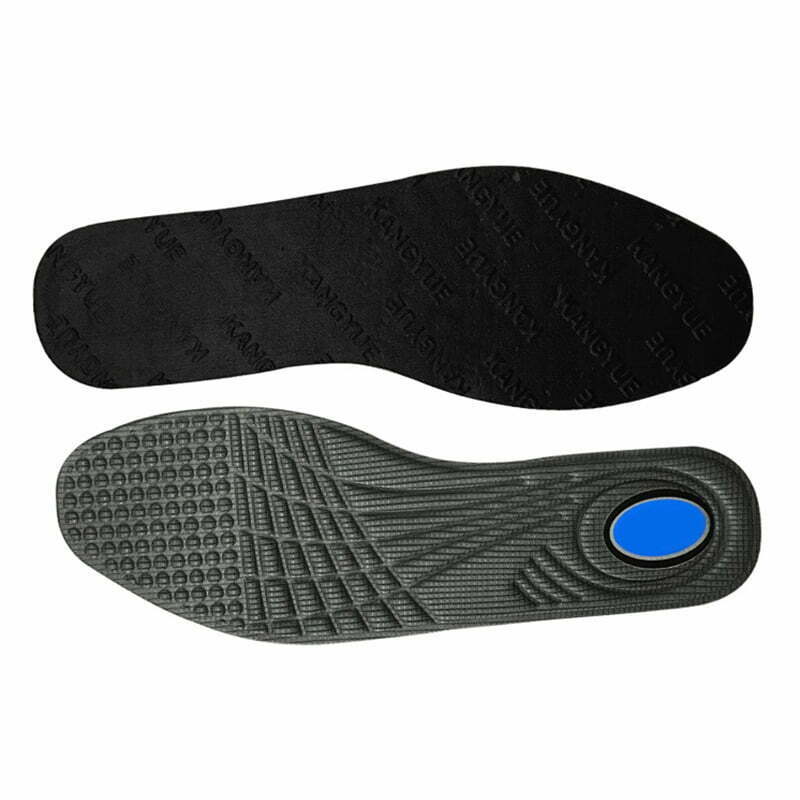
The single most important factor in a running shoe is shock absorption. It is vital to protect your feet, achilles tendon ankles, knees, and hips from the impact of running. So, to avoid feet swell shock-absorbing shoes are a must to have! A good shock-absorbing shoe will help you to avoid injuries and to run more efficiently. There are several factors to consider when choosing a running shoe with good shock absorption.
The first factor is the material of the sole. A foam sole will provide good shock absorption, but may not be as durable as a rubber sole. A second factor is the thickness of the sole. A thick padding or sole will provide more shock absorption, but may make the shoe heavier. A third factor is the design of the sole. Some soles are designed with extra cushioning in the heel or forefoot, which can provide extra shock absorption.
When choosing a running shoe with good shock absorption, it is important to consider your own needs and preferences. If you are a heavy runner, you may need a shoe with a thicker sole. If you are a light runner, you may prefer a lighter weight shoe. If you are prone to injuries, you may want a shoe with extra heel cushioning or forefoot. Ultimately, the best way to find a shoe with good shock absorption is to try out different shoes and see what works best for you.
7) Insoles
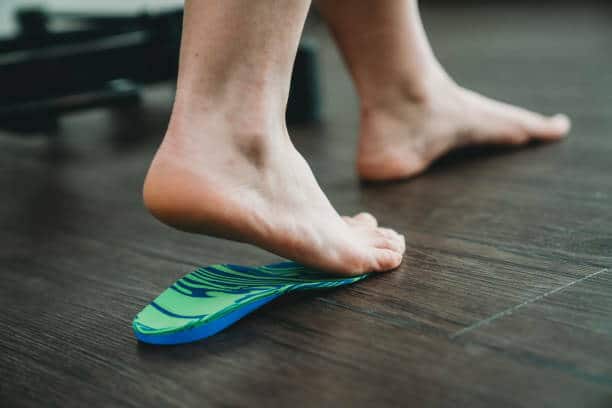
The insoles of a running shoe are extremely important for a number of reasons. First, they provide cushioning and support for the foot. Second, they help to absorb shock and protect the foot from impact. Third, they can help to keep the foot cool and dry by providing ventilation. Fourth, they can help to stabilize the foot and prevent it from slipping. Fifth, they can help to make the running shoe more comfortable to wear. Seventh, they can help to extend the life of the running shoe.
There are a number of different materials that can be used for the insoles of a running shoe. The most common material is EVA foam. Other materials that are sometimes used include gel, air, and foam.
When choosing the right insoles for a running shoe, it is important to consider the foot type that will be wearing the shoe. For example, if you have a high arch, you will need to choose an insole that provides good added arch support. If you have a flat feet, you will need to choose more cushioned shoes. If you have a wide foot, you will need to choose an insole that is wide enough to fit your foot. If you have a narrow foot, you will need to choose an insole that is narrow enough to fit your foot.
It is also important to consider the type of terrain that you will be running on when choosing the right insoles for a running shoe. For example, if you will be running on pavement, you will need to choose more cushioned shoe. If you will be running with trail shoes on trails, you will need to choose an insole that is more rugged.
8) Midsoles
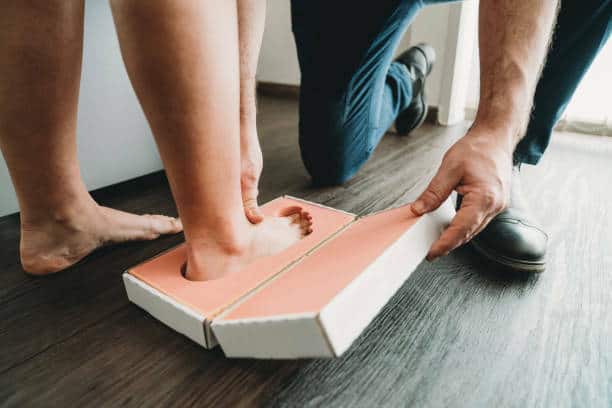
Midsoles are one of the most important aspects of a running shoe. They provide cushioning and support for your feet, and can help to absorb impact. There are a variety of different materials used in midsoles, and each has its own advantages and disadvantages. You’ll want to consider the type of material, as well as the thickness and density of the midsole, when choosing a running shoe.
EVA foam is a popular material used in midsoles. It’s lightweight and has good shock absorption properties. However, it can break down over time and may not be as durable as some other materials.
Polyurethane is another common material used in midsoles. It’s more durable than EVA foam, but it’s also heavier.
Some running shoes have dual-density midsoles, which means they have two different materials in the midsole. This can provide a good balance of cushioning and support.
You’ll want to choose a shoe that provides the right amount of cushioning and support for your needs. If you have any foot or ankle problems, you may want to choose a shoe with a thicker or more supportive midsole. If you’re an experienced runner who is looking for a lighter weight shoe, you may want to choose a shoe with a thinner midsole.
9) Padding
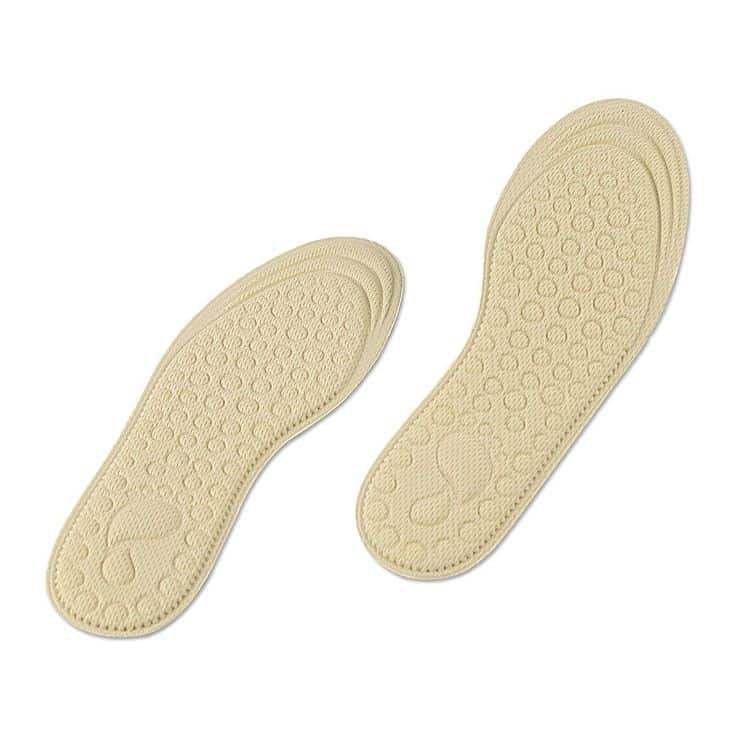
Padding in running shoes is important for two reasons: comfort and shock absorption. A good quality padding will help to absorb impact and protect your feet from the repetitive pounding that comes with running. It will also help to keep your feet comfortable by providing a layer of cushioning. There are a few different types of padding that you can choose from, so it’s important to find the right one for you.
EVA foam is a popular choice for padding because it’s lightweight and bouncy. It’s also great at absorbing impact, making it ideal for runners who are looking for a bit of extra protection.
Memory foam is another popular choice for padding. It’s known for being extremely comfortable and supportive. It conforms to youf foot shape and provides a custom fit. It’s also great at absorbing impact and reducing pressure points.
Gel padding is another option that’s popular among runners. It’s known for being extremely lightweight and comfortable. It also does a great job of absorbing impact and reducing pressure points.
So, what’s the best padding for you? It really depends on your individual needs and preferences. If you’re looking for extra protection from impact, then EVA foam or gel padding might be a good choice. If you’re looking for a more custom fit and extreme comfort, then memory foam might be the right choice for you. Ultimately, it’s up to you to decide what’s best for you.
Final Words

There it is, running lovers! The comprehensive buyer’s guide for running shoes! Obviously, you have to test yourself first on the few pairs of shoes to find the right pair. And remember, gait cycle and running gait playing a big role.
Sooo, what are you waiting for? Stop wait and run to your local running store or check this post for the best neutral running shoes where we talked about the best neutral shoe overall, best stability shoes, best lightweight shoes, best shoes for flat foot and more…
And if I have to be honest with you, I wear one of these neutral shoes myself. I picked the stability running shoes. This stability shoe is just perfectly suited for my running style (yeah I run too, haha). Of course the other shoe brands are also perfect.
Soon in our blog we are going to talk about the best minimalist shoes, so stay excited!
Let us know in the comments below, if you find your new pair of best running shoes!
FAQ
Are Foot Rolls Good?
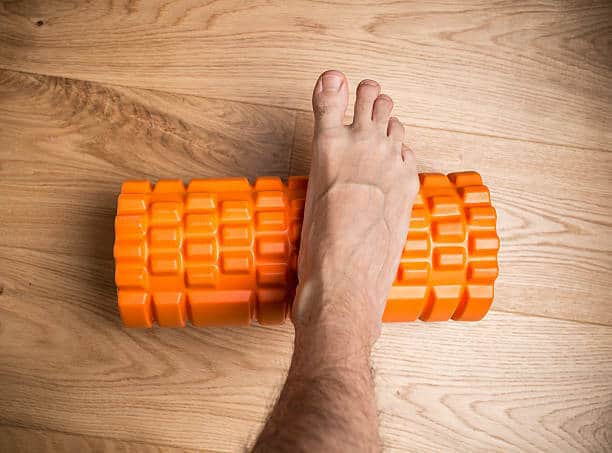
One common question that many people ask when they are looking for new running shoes is whether or not foot rolls are a good thing. The answer to this question is not always clear, as there are pros and cons to having foot rolls. On the one hand, foot rolls can help to provide extra support and stability for your feet, which can be helpful if you have any issues with your feet. On the other hand, foot rolls can also add extra weight to your shoes, which can make them more difficult to run in. Ultimately, the decision of whether or not to get running shoes with foot rolls is up to you and what you feel most comfortable with. However, it is worth considering both the pros and cons before making a decision.
If you have never had a foot roll before, then you may be wondering what they are. Foot roll is basically just extra support that is built into the shoes. This support can come in the form of an arch support, which can help to keep your feet in a more neutral position. This can be helpful if you have any problems with your feet, such as flat feet or high arches. A foot roll can also come in the form of a heel cup, which can help to support your heels and prevent them from slipping. Again, this can be helpful if you have any problems with your feet.
What Are Traditional Running Shoes?

A traditional running shoe is the type of shoe that you see most people wearing when they go for a run. They usually have a lot of padding and support, and they’re designed to be comfortable for long periods of time. They’re also usually made with a lot of different materials, including mesh, leather, and synthetic materials.


